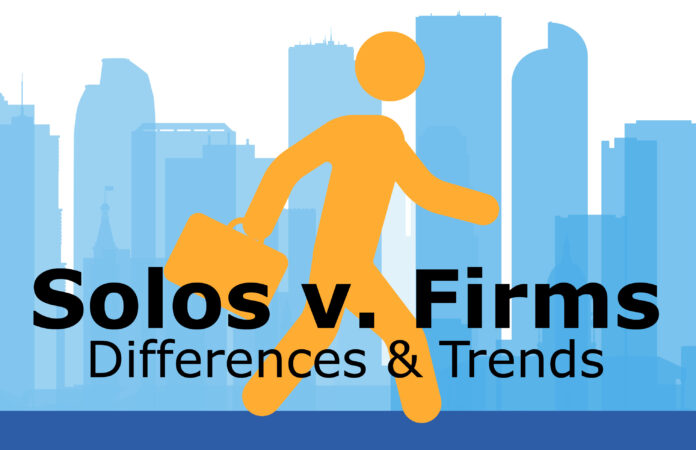

Solo versus firms continues to be a hot buzz topic as more lawyers transition to solo practice.
“Solo lawyers make up a strong and vital contingent — one that represents a unique form of practice — within the wider market for legal services,” noted Clio’s 2023 Legal Trends for Solo Law Firms report.
“Solo lawyers, who make up about 30% of Colorado’s population of lawyers in private practice, play a vital role in serving the legal needs of individuals and small businesses across the state. The solo population skews older, with 45% of solos aged 60 or older, underscoring the critical need for solos to engage in succession planning to protect the interests of clients and their own families in the event of disability or death,” wrote Gene Commander, an executive business counselor to the legal profession, to Law Week via email.
According to the Clio report, the demand for legal services dropped significantly during COVID-19. Solos then saw a resurgence in 2021 that grew their revenue even more than before the pandemic.
Non-solos fought against the same challenges in 2020 and similarly to solos, saw the demand for casework increase in 2021.
For solo practices, relative to 2019, in 2022 they saw an increase in matters by 2%, an increase in billable hours by 1%, an increase in billed money by 18% and an increase in collected money by 20%.
Contrastingly, for non-solo practices, relative to 2019, they saw an increase in matters by 9%, an increase in billable hours by 13%, an increase in billed money by 31% and an increase in collected money by 36%.
“Solos generally have to wear MANY more ‘hats’ since they are the marketing director, the receptionist, the paralegal and the business manager,” wrote Justie Nicol, CEO of Colorado Lawyer Team, to Law Week via email.
Nicol is the sole owner of the small firm Colorado Lawyer Team. Before that, she worked in government prosecution, nonprofit representation and many small to medium-sized private firms in Colorado and in Idaho. As CEO she has hired two full-time lawyers and two contract attorneys and is currently working to bring on one of counsel. Her firm also has a receptionist, paralegal and office administrator/legal assistant.
“Larger firms have the luxury of being able to pay staff to do things like post blogs and respond to website chats,” noted Nicol. “Solos don’t have that ability. We are experts in a wide variety of things because we have to be — but that may also mean that we are not truly as good at marketing as someone who can devote 100% of their time 40 hours a week to just doing marketing.”
Although Nicol started solo, she eventually brought teammates on because she wanted to ensure the success of her business while she was occupied with trials and other tasks.
More Flexibility, but with Some Downsides
“We are a 100% women law firm at this time, and it’s amazing to have the flexibility to do what we need for our families at the same time as doing high-quality legal work with the latest in technology efficiencies,” added Nicol.
The three key performance indicators that law firms and solos pay attention to for insight into how their business is performing are utilization rate, realization rate and collection rate.
In terms of utilization, solos are about 11% lower than non-solos.
The Clio report explains many solos struggle to find time to give to their clients because it’s hard to balance their days with other non-billable administrative work.
“In 2022, the average utilization rate for solo lawyers was just 25%, which amounts to just two hours of billable work each day,” noted the Clio report. “In comparison, non-solos, with a utilization rate of 36%, put in an average of 2.9 hours of billable work each day. For the 240 working days in 2022 (assuming at least two weeks of vacation), lawyers working at larger firms put in 211 more billable hours than solo lawyers.”
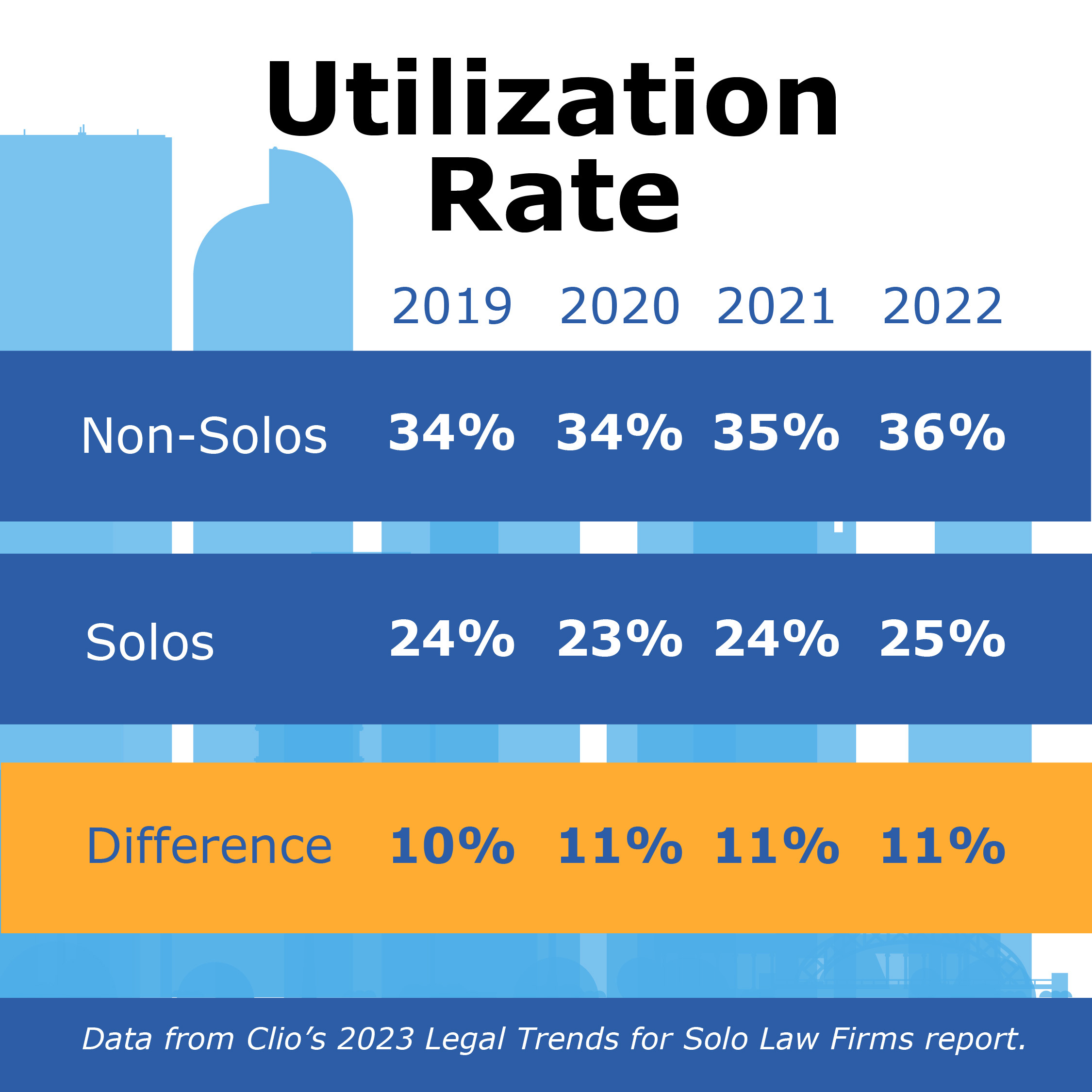
“I probably work 8 hours a day … versus the 10 to 12 [hours] when I was at a large law firm,” said Barb Heikoff, a transactional real estate attorney.
Heikoff started practicing law in Connecticut in 1992, and then in 1994 she moved to Colorado and started working at a large firm. After deciding to go solo, she was also contracting full-time.
“It’s really hard to get business, especially the type of stuff that I was used to doing was for clients who typically hire medium and large firms,” noted Heikoff.
She eventually found out about Colorado W.O.L.F. (Women Owned Law Firms) and began attending their meetings.
“I started getting plugged into the support that is available out there for women attorneys who have their own practice,” added Heikoff. She became chairwoman of Colorado W.O.L.F. in 2019.
She was on the small firm’s council of the Colorado Bar Association for five years until she left in the middle of last year because of the required dues to serve. Large and medium firms will just automatically pay CBA dues, explained Heikoff.
“It will automatically pay for CLEs, and so it makes sense that those are the people they’re dedicated to,” noted Heifkoff.
But for solos, membership differs. Some belong to the American Bar Association, which offers a lot of free CLEs; some join the CBA and pay for an education pass. CBA offers medium and large firms volume discounts on their educational passes.
“Solos and small firms have to decide how to spend their budgets which can be tight,” added Heikoff.
“I started championing the CBA to offer solo small firms the same deal, the same discount that they offer large and medium firms, and it took three years,” added Heikoff.
Lower Overhead Translates to Lower Prices
“There is a striking difference between how much a solo lawyer charges compared to a non-solo,” noted the Clio report. “Since 2019, non-solo lawyers have consistently charged approximately 20% more per hour.”
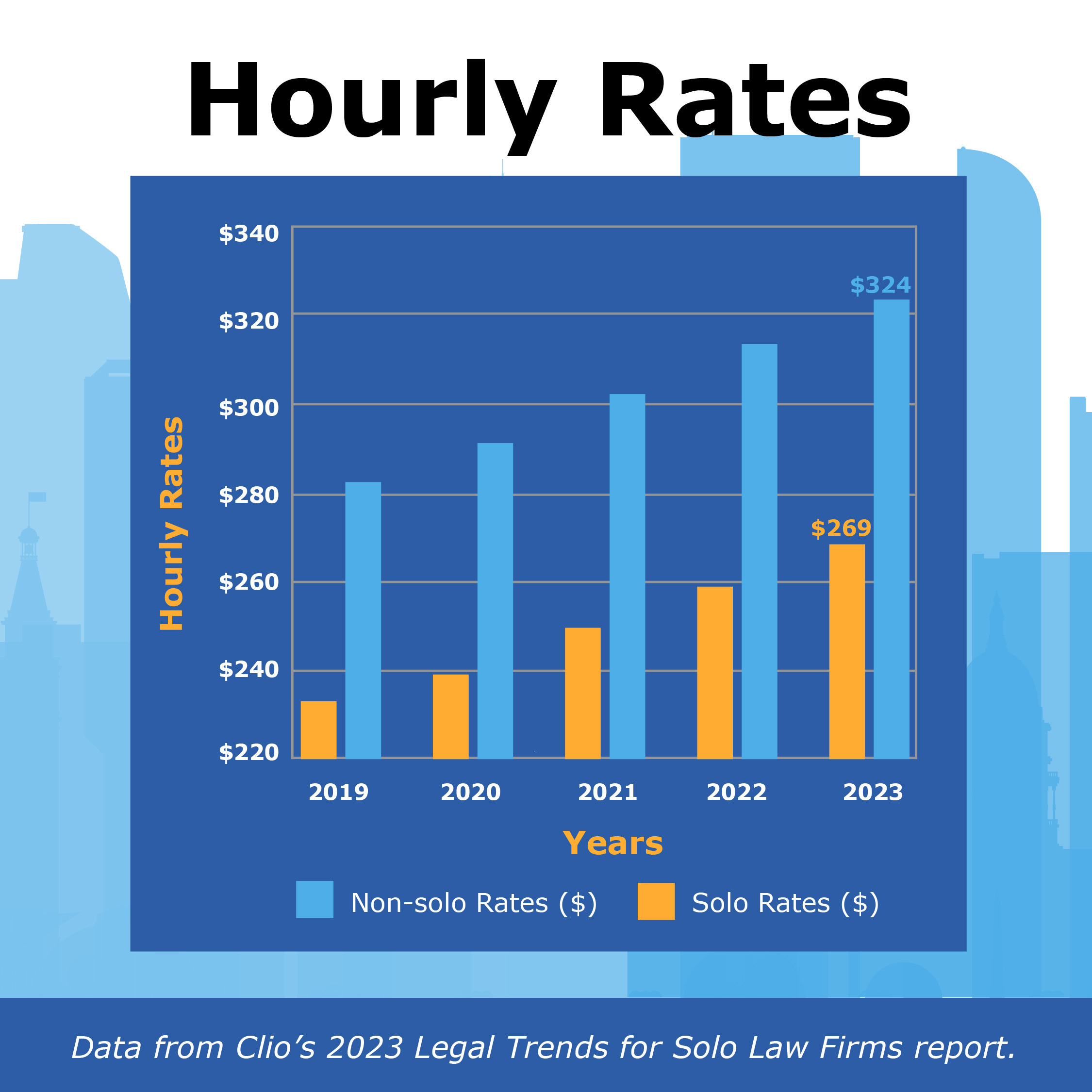

“For me, it’s a lot cheaper,” added Heikoff. “One of the reasons why large firms pay their attorneys less than I can earn as a solo is they have all sorts of overhead and commitments that I don’t have.”
Heikoff pays her costs but also saves money by the type of administration she utilizes. Her major costs consist of her malpractice insurance. She also pays a small sum for marketing.
Work-life Balance
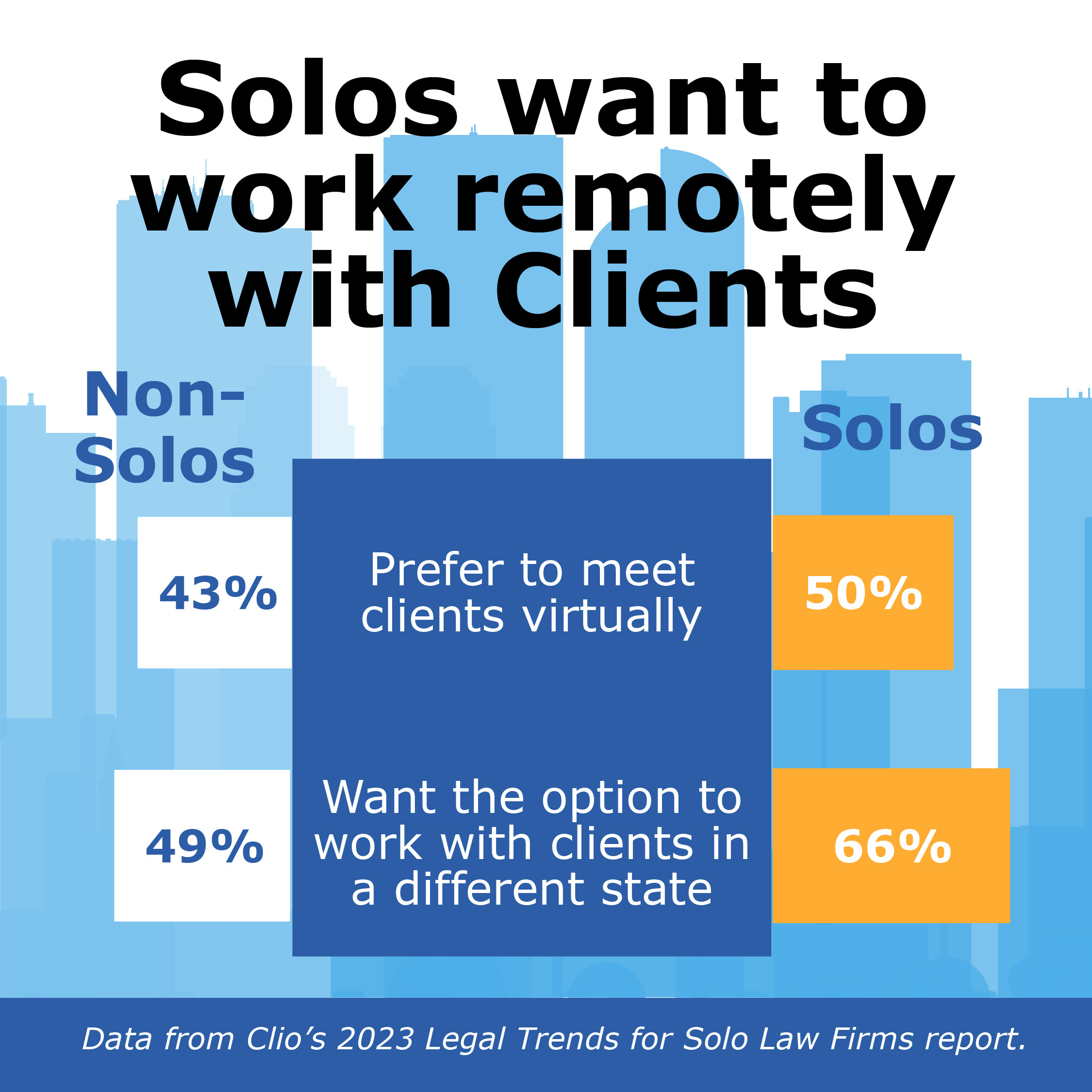

Heikoff has worked remotely since 2003 unless she had contract work, then she would go into the office occasionally for meetings.
“It’s all from home, and I have the advantage of not being a litigator, so I don’t need to show up to court,” added Heikoff.
This flexibility allowed Heikoff to dedicate more of her time to family members. “I didn’t have to feel embarrassed,” noted Heikoff.
“I also think firms penalize parents and unless you’ve made partner, you’re not able to set your own schedule,” added Nicol. “Working ungodly amounts of time for billable hour requirements should be a thing of the past, and firms don’t use value-based billing.”
“A remote workforce is the way of the future,” continued Nicol.
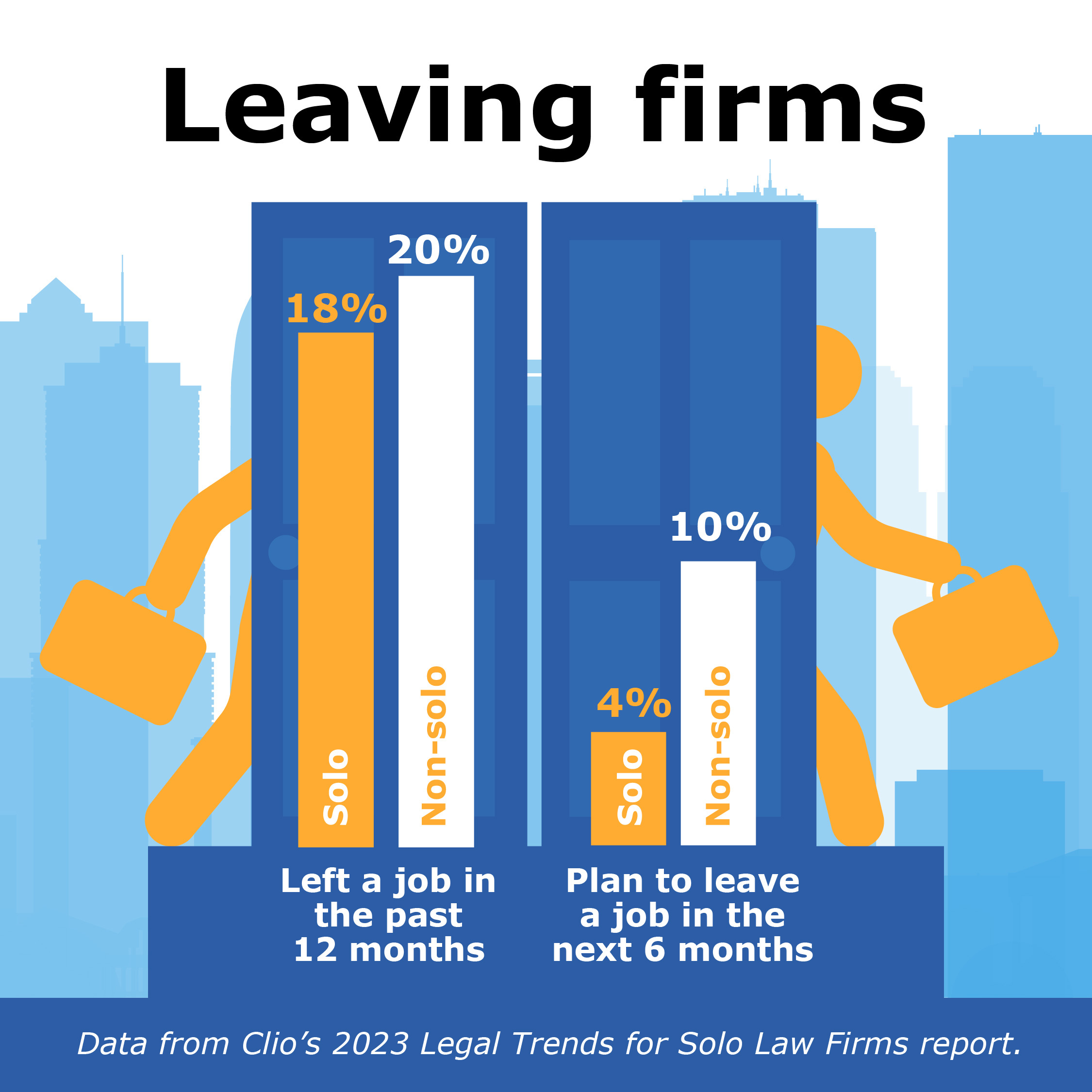

“31% of lawyers who quit their firms started their own solo practices,” noted the Clio report.
“I think if anybody has been an employee, there’s always this awareness that what you do is under the microscope, you know you’re constantly being judged not only on performance but face time,” explained Heikoff.
Less Office Space, Less Overhead
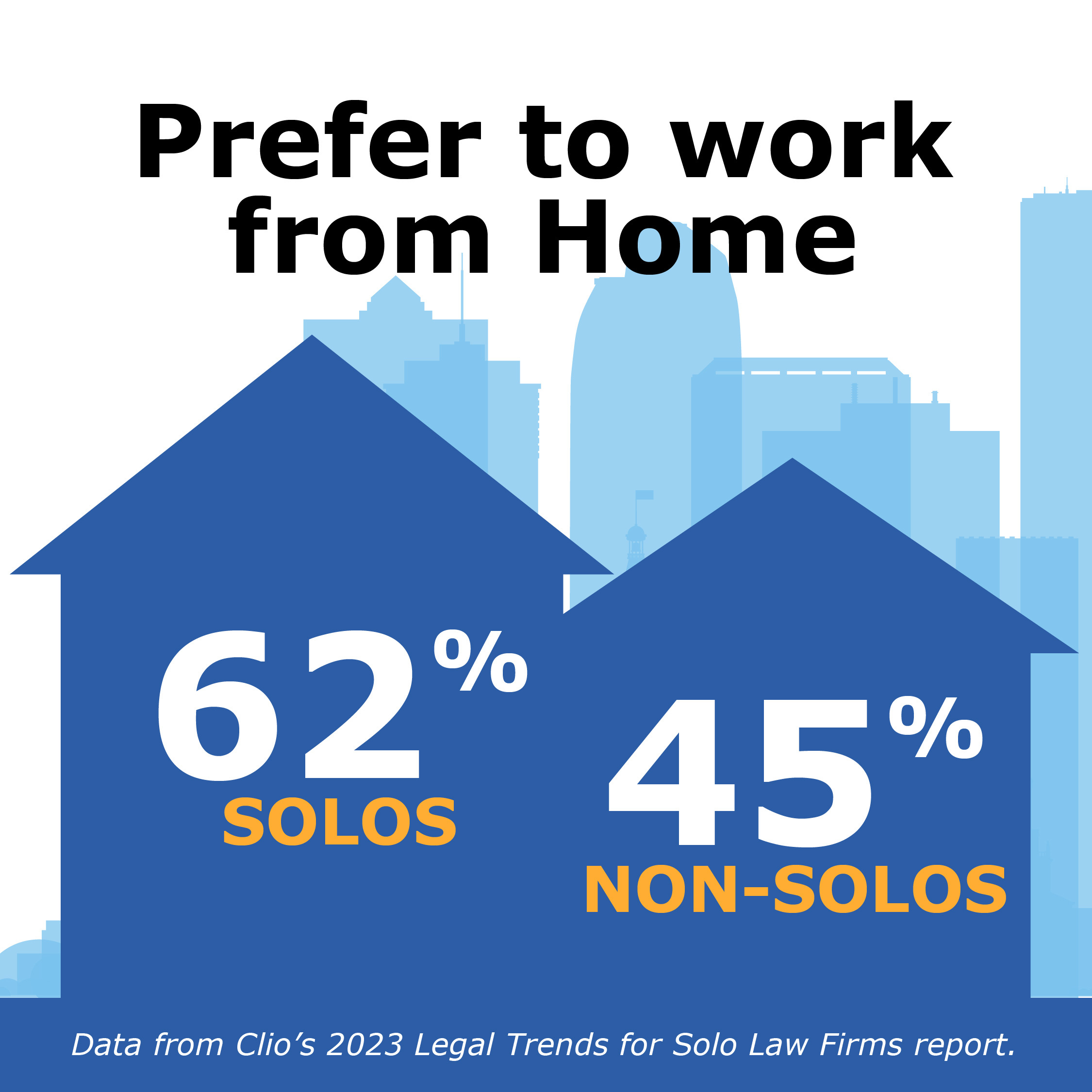

“It’s easier for clients to find us online simply because solos can put out real, honest, valuable content,” noted Nicol. “I think many firms don’t recognize the benefits of a work-from-home/ virtual culture.”
“Solos have the ability to customize everything we do,” added Nicol.
In terms of benefits, Nicol told Law Week she can control her output, focus on her team’s burnout and capacity and have the flexibility in her firm to make instant changes without the need for bureaucratic approval and delay.
“The biggest cost is probably feeling isolated,” noted Nicol. “We don’t have the ability to ‘pick someone’s brain’ who’s just down the hall. It’s very intentional when we seek out other lawyer’s company, and it can be disheartening to work from home or in a true solo practice simply because you miss the social interactions that come with bigger firms.”
Other costs include increased stress when things like financial stability are affected by the economy, explained Nicol.
“Overwhelmingly solos are minority lawyers—women, BIPOC, LGBTQ+, etc. who prefer the flexibility of being their own boss, setting their own hours, and controlling their own destiny,” added Nicol.
Small-sized, but no Less Innovative
“Solos remain ahead of the curve in cloud technology adoption: 85% use cloud-based legal practice management (LPM) software compared to 55% of non-solos. They are also much more likely to use online solutions for video conferencing, electronic payments, website design, e-signatures, and data storage,” according to the Clio report.
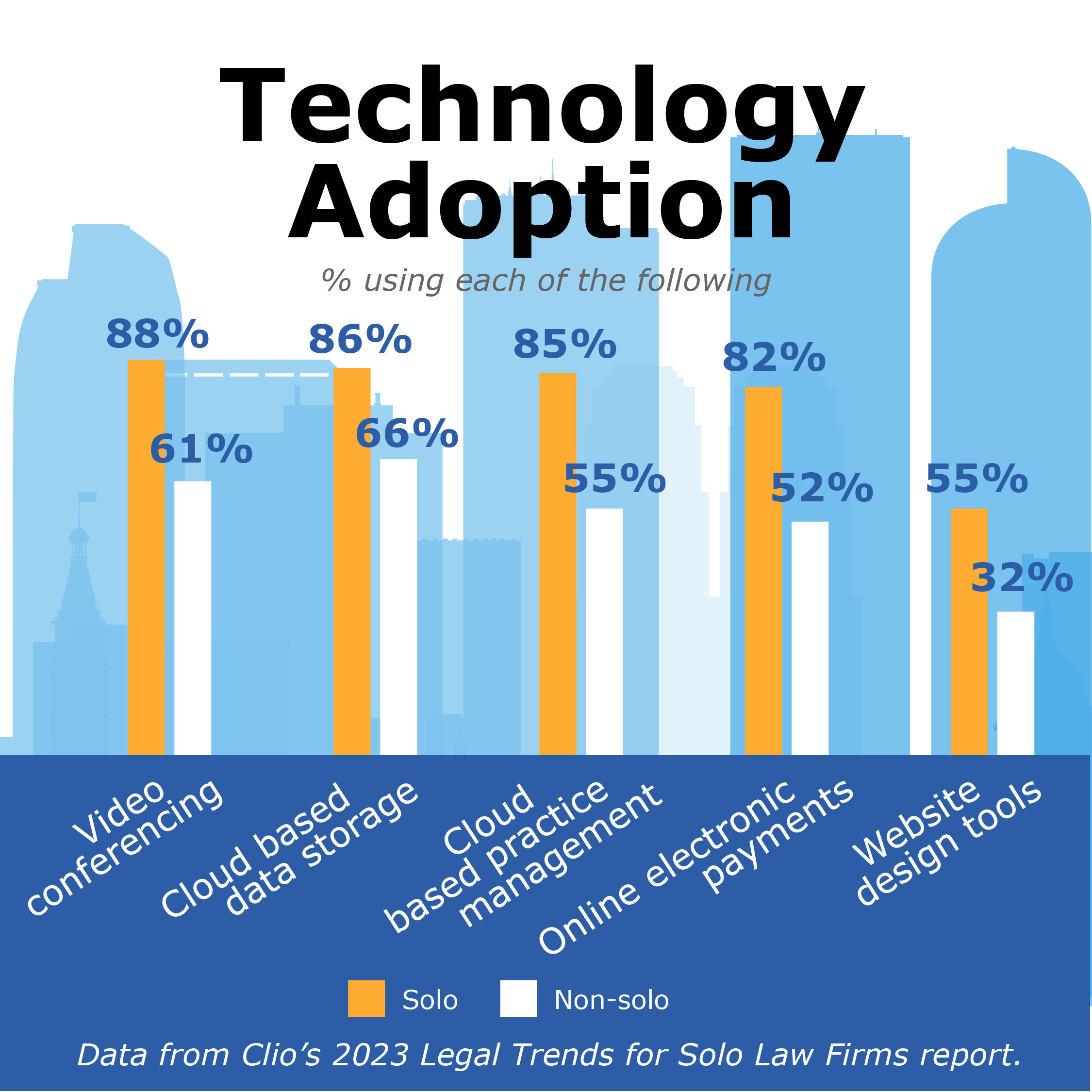

“It’s easier to compete with larger firms these days than ever before,” noted Nicol. “Social media and online marketing platforms are more affordable than historical print advertising.”
Nicol told Law Week she’s probably tried and discarded more legal technology or apps than any other lawyer in Colorado.
“My favorite strategy is to be very tech-savvy and cutting-edge on the virtual front because it saves my clients money and eliminates most of my overhead,” added Nicol.
She has a robust tech stack to collaborate more effectively internally, efficiently research and respond to legal issues and store valuable client data and processes/procedures.
These tools mean that onboarding new employees is easier and Nicol’s team all works from the same playbook despite being in three different states, explained Nicol.
“As larger firms close the gap on tech adoption, solos will need to find new opportunities to set them apart if they intend to continue leading innovation in legal services,” noted the Clio report.
Nicol believes artificial intelligence is going to level the playing field between solos and larger firms even more.
“AI is here to stay, and we’d best figure out how to use it professionally and responsibly as an industry or we’ll get left behind,” added Nicol.
CORRECTION NOTE: This article has been updated Feb. 2 to include more specific information from one of the sources and to fix a typo in a quote. Law Week regrets the error.

